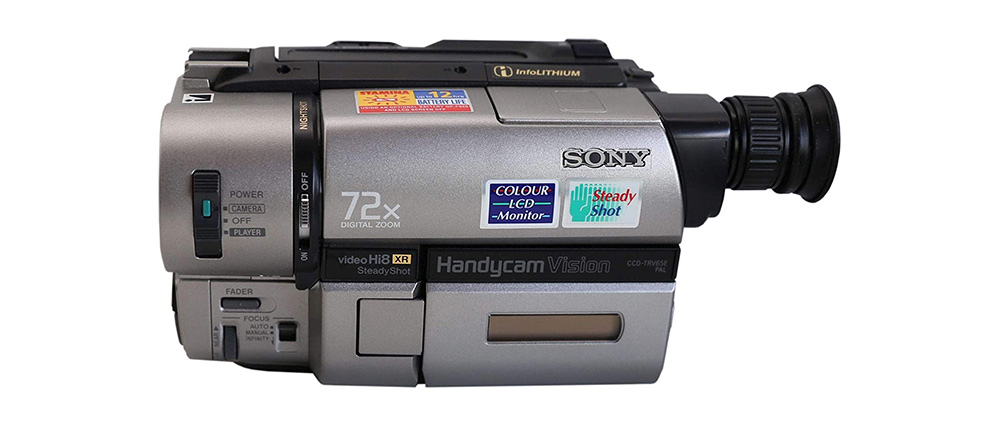Before smartphones are common, the most common way for anyone to be able to record a video, was by using a camcorder.
These are self-contained portable electronic devices that come equipped with an optical zoom lens, a swappable battery and recording media, and a belt to facilitate the user holding the device.
In that era, the time when camcorders were a hit, Sony was among the biggest players in the market with its Handycam brand.
In an attempt to make its Handycams better and more competitive in the market, in 1998, Sony launched the TR-940 and the TRV-99.
The two flagship devices were capable of recording videos in the dark, termed as 'NightShot'. This technology was ahead of its time, as it allowed the Handycams to work in extreme low-light condition.
And this was when things became a nightmare.

Soon after the two devices hit the market, and people started using the NightShot feature, many started to realize that things were more than what they seemed to be.
As promised by Sony, the two analog Handycams are able to clearly see in the dark.
But far too well.
This happened because Sony added an infrared light-emitting diode to illuminate the scene, and an infrared filter to capture images even in complete darkness. Sony did this in order to make the night vision mode a lot useable.
The 940nm infrared wavelength, is invisible to the human eye. This technology is useful for capturing images in situations where traditional lighting is not available or would be too intrusive, such as wildlife photography, surveillance, or ghost hunting.
However, the (unwanted) side effect is that the the two Handycams are also able to see through people's clothes.
The technology is able to do this because it is able to record beyond the visible spectrum, working on a different wavelength, which in turn revealed what's supposed to be concealed.
It was person that goes with the name Greg Hunter who first made the news public.
At that time, Hunter who was the Customer Correspondent at Good Morning America back in 1998, demonstrated the Handycams' capabilities with the help of two volunteers: a man who had a tattoo under his shirt, and a woman who was wearing a black patterned skirt.
In the demonstration, it was revealed that the man's tattoo reads "Sosa" and was clearly readable, and that woman was wearing nothing underneath her skirt.
But it was too late for Hunter, even for Sony.
At that time, Sony already sold 700,000 camcorders in 1998, and many of them included the two models.
Fortunately, footage recordings of voyeurisms made using the Handycams were kept in private, due to the fact that the medium to share them didn't exist.
But as soon as the internet reached to more people, many began to upload the footage of what was recorded using the two Sony Handycams.
On YouTube and other streaming platforms, including adult websites, many videos show how eerily scary the Handycams' night vision mode was.
In many of the recordings, which were mostly taken in public swimming pool area, show that the camcorders were able to capture what's underneath people's clothing, if Night Vision is enabled in well-lit environment.
Sooner than later, nude pictures of girls and women were trending on the internet, with many showing what's underneath the women's one piece, and two piece bikinis, dry and wet.
Most of the recordings were made in swimming pool areas, not only because people wear minimal clothing there, but also because swimsuits are relatively thin.
This allows the the infrared components make them transparent, allowing the recorders to clearly differentiate skin and others that are contrasting in color, like the areola and pubic hair.
Many of the videos reached millions of views, with a number of them reaching tens of millions of viewers.
"At least 12 websites feature pictures of women who look almost naked, even though they are wearing clothes or a swimsuit," said a prominent publication.
There were even claims about someone from the British royal family who was filmed "naked" with the Sony camcorder.

Sony was swift when it realized this havoc.
Not long after Hunter's revelation, and after the products' voyeuristic potential was published in an article by one of Japan's biggest selling men's magazine, the camcorders were immediately recalled.
Sony quickly developed and shipped newer versions of the Handycams, but without the infrared light-emitting diode and the infrared filter.
Instead, Sony replaced the component with an infrared nightscope, which makes newer versions of the Handycams better in taking videos of nocturnal animals or birds.
But no, many people didn't care much about this newer version. To those people, voyeurism is a lot more interesting than some bird watching or night safari.
With the Night Vision Handycams were being recalled, and their replacements lacked the superpower, the demand created a trend, which in turn created a market.
Because of the high demand, many of the Handycam owners started selling them at a much higher price than what they paid for when new. Many used e-commerce platforms, like eBay, to sell the items.
At that time, the two Handycams were hot commodities to hunt for voyeurisms.

The Japanese company tried to divert the public's attention, but people were so agitated that some also managed to revamp existing Sony Handycams to also have see-through power.
Methods include using special infrared filters, recording only on a very specific combination of lighting, skin color, and fabric, and so forth. And on other cameras that are equipped with their own night vision mode, some managed to replicate this X-ray vision by putting an infrared filter in front of it.
When questions about the legal offenses as a consequence of widespread use of the Sony Handycams were raised, the judicial system was incompetent to deal with such situations, simply because no law could be used to charge such offenders.
"It’s an outrage — I think it would outrage anyone. You go out in the street you don’t expect people to look under your clothes. It’s such a basic expectation that any court in the country would find that this violates that right," said Martha Davis, the then-director of the National Organization for Women’s Legal Defense fund.
In 2020, a similar technology made its way to another consumer device. At the time, OnePlus 8 series was betting high on the cameras, especially through its OnePlus 8 Pro. The device's camera has a color filter mode that can see through objects that are mostly black.
Just like the Sony Handycam's fiasco, the OppoPlus 8 Pro's 'Photochrom' filter uses infrared sensors that can capture infrared radiation not visible to the naked human eyes.
